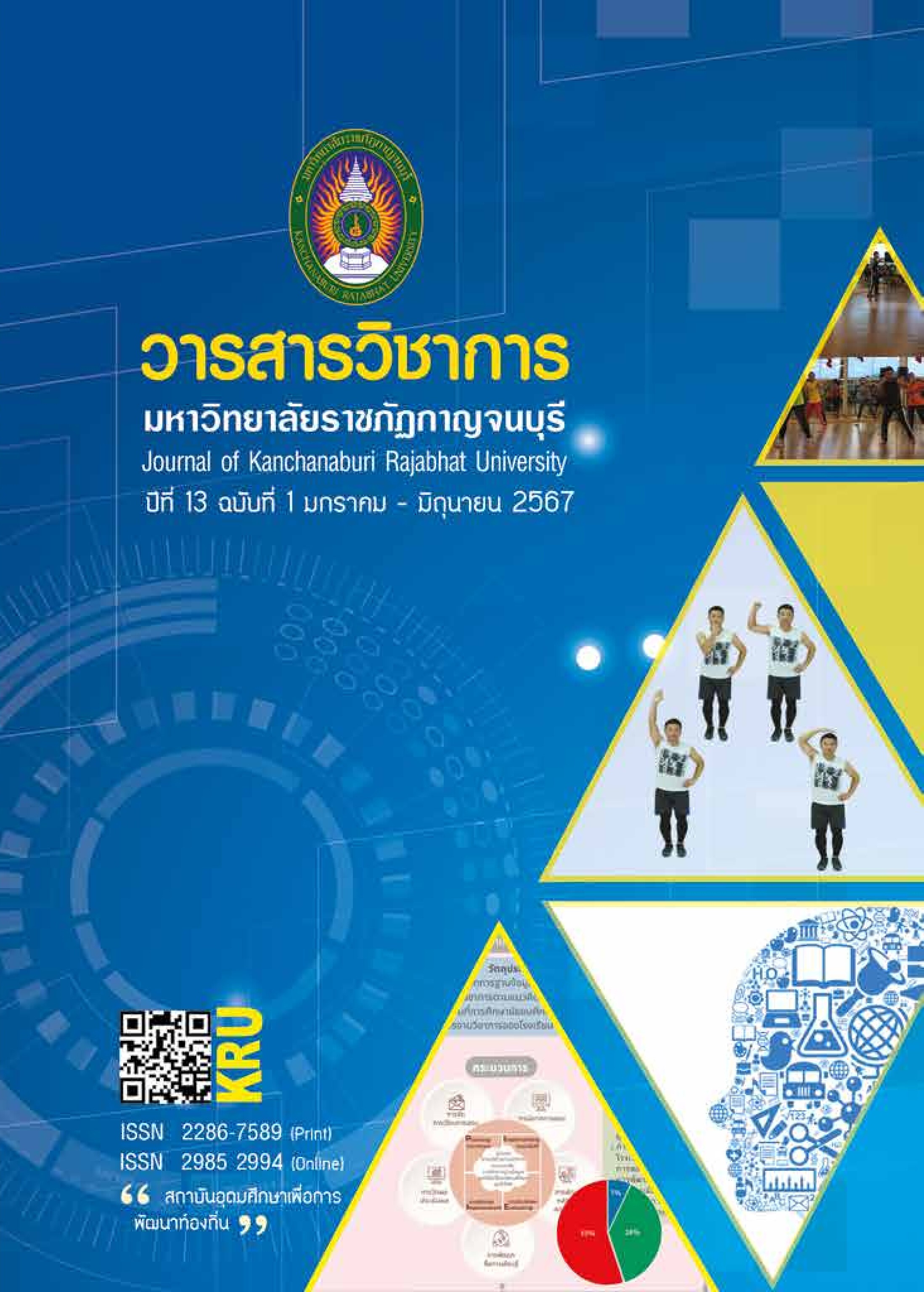การพัฒนารูปแบบการบริหารงานวิชาการตามแนวคิดการจัดการฐานข้อมูลของโรงเรียนมัธยมศึกษายุคดิจิทัล
Main Article Content
Abstract
This research aimed to 1) explore the elements of administration models in academic affairs based on the secondary schools information system in the digital era; 2) develop an academic affairs administration model based on the management information system approach of secondary schools in the digital era; and 3) evaluate the correctness, the appropriateness, the possibility and the applicability of the academic affairs model based on the management information system approach of secondary schools in the digital era. This research applied mixed methods. It was divided into 3 phases. In Phase 1, elements of academic affairs administration models based on the management information system approach of secondary schools in the digital era were studied. The samples included 210 secondary schools under the Office of Basic Education Commission. The informants were 630 school administrators, academic deputy directors or heads of academic affairs units, and heads of information units. The samples were derived by stratified random sampling as distributed by the schools. The data were collected using a rating scale questionnaire. The statistics used for the data analysis included frequency, percentage, mean, standard deviation, and confirmatory factor analysis. In Phase 2, an academic affairs administration model was developed based on the management information system approach of secondary schools in the digital era and interviews with the sample group from schools receiving the best practice award in academic affairs. The sample group consisted of 9school administrators, academic deputy directors or heads of academic affairs units, and heads of information units. This sample group was derived by purposive selection. In Phase 3, the appropriateness of the academic affairs administration model of secondary schools in the digital era was evaluated. The informants were 9school administrators, academic deputy directors or heads of academic affairs units, and heads of information units. This sample group was derived by purposive selection. The data were collected through seminars and analyzed using the method of content analysis.
The research results showed that:
The elements of the academic affair development model of secondary through database management in the digital era consisted of 1) the development of secondary school curriculum through database management, 2) teaching and learning management through database management, 3) evaluation through database management 4) teaching supervision through database management 5) the development of learning media through database management. The academic affairs administration model based on the management information system approach of secondary schools in the digital era consisted of 1) principles of the model, 2) goals and objectives of the model; 3) academic affairs administration process based on the management information system approach of secondary schools in the digital era, including 3.1) planning for developing management information system of academic affairs administration, 3.2) implementing the development plan for the management information system of academic affairs administration, 3.3) following-up on the management information system development plan, and 3.4) measuring and evaluating the results of management information system development for academic affairs administration; 4) getting the results.
All experts agreed on the academic affairs administration model based on the management information system approach of secondary schools in the digital era. The developed academic affairs administration model was found to be accurate, appropriate, feasible, and practical at the highest level.
Article Details

This work is licensed under a Creative Commons Attribution-NonCommercial-NoDerivatives 4.0 International License.
References
กระทรวงศึกษาธิการ. (2560). แผนการศึกษาแห่งชาติ พ.ศ. 2560 - 2579 (พิมพ์ครั้งที่ 1) . กรุงเทพฯ : พริกหวานกราฟฟิค.
ปาริชาติ ชมชื่น. (2555). รูปแบบการบริหารงานวิชาการแบบมีส่วนร่วมของชุมชนที่มี ประสิทธิผลในสถานศึกษาสังกัดสํานักงานเขตพื้นที่การศึกษาประถมศึกษา.
วิทยานิพนธ์ครุศาสตรดุษฎีบัณฑิต สาขาผู้นำการบริหารการศึกษา บัณฑิตวิทยาลัย มหาวิทยาลัยราชภัฏอุบลราชธานี.
ระวี จันทะนาม. (2557). รูปแบบการบริหารงานวิชาการแบบมีส่วนร่วมที่มีประสิทธิผลในโรงเรียนขนาดกลาง. วิทยานิพนธ์ครุศาสตรดุษฎีบัณฑิต
สาขาวิชาการบริหาการศึกษา บัณฑิตวิทยาลัย มหาวิทยาลัยราชภัฏอุบลราชธานี.
รัชฎาพร มีอาษา. (2555). การใช้เทคโนโลยีสารสนเทศในการบริหารงานวิชาการของผู้บริหารสถานศึกษา อำเภอเมืองสระแก้ว สังกัดสำนักงานเขตพื้นที่การศึกษา
ประถมศึกษาสระแก้ว เขต 1. วิทยานิพนธ์ การศึกษามหาบัณฑิต สาขาวิชาการบริหารการศึกษา คณะศึกษาศาสตร์ มหาวิทยาลัยบูรพา.
วัชรศักดิ์ สงค์ปาน. (2558). การพัฒนารูปแบบการบริหารโรงเรียนเพื่อบรรลุผลการประกันคุณภาพภายในของโรงเรียนมัธยมศึกษาภาคใต้ฝั่งอันดามัน.
วิทยานิพนธ์ศึกษาศาสตรดุษฎีบัณฑิต สาขาวิชาการบริหารการศึกษา บัณฑิตวิทยาลัย มหาวิทยาลัยหาดใหญ่.
วิลัยวรรณ ปู่ธิรัตน์. (2558). การพัฒนารูปแบบการบริหารงานวิชาการที่มีประสิทธิผล ในโรงเรียนขนาดเล็ก สังกัดสํานักงานเขตพื้นที่การศึกษาประถมศึกษา
อุดรธานี เขต 4. วารสารบัณฑิตศึกษา, 14 (65), 119 – 130.
สำนักงานคณะกรรมการการศึกษาขั้นพื้นฐาน. (2554). การจัดระบบบริหารและสารสนเทศภายในสถานศึกษาตามกฎกระทรวงว่าด้วย หลักเกณฑ์และวิธีการประกัน
คุณภาพการศึกษา พ.ศ.2553. กรุงเทพฯ : สำนักทดสอบทางการศึกษา.
อภิญญา รัตนโกเมศ. (2552). การใช้เทคโนโลยีสารสนเทศในการบริหารงานวิชาการของโรงเรียนขยายโอกาสทางการศึกษา สังกัดสำนักงานเขตพื้นที่การศึกษา
อุดรธานี เขต 3. วารสารศึกษาศาสตร์ มหาวิทยาลัยขอนแก่น, 32 (4), 180-191.
อัยลัดดา ตองอ่อน และ ดรุณี ปัญจรัตนากร. (2566). การพัฒนาระบบการจัดการเทคโนโลยีสารสนเทศ เพื่อบริหารงานวิชาการของสถานศึกษา สังกัดสํานักงาน
เขตพื้นที่การศึกษามัธยมศึกษาประจวบคีรีขันธ์. วารสารนวัตกรรมการศึกษาและการวิจัย, 7 (2), 603-618.
อิทธิพล พลเหี้ยมหาญ. (2562). การพัฒนารูปแบบการบริหารโรงเรียนมัธยมศึกษาขนาดเล็กที่มีประสิทธิผล สังกัดสำนักงานเขตพื้นที่การศึกษามัธยมศึกษา
ในภาคตะวันออกเฉียงเหนือ. ดุษฎีนิพนธ์ปรัชญาดุษฎีบัณฑิต สาขาวิชาการบริหารและพัฒนาการศึกษา บัณฑิตวิทยาลัย : มหาวิทยาลัยราชภัฏสกลนคร.
Collins, E. (2003). Collins essential thesaurus (2nd ed.). Retrieved October 2, 2023, from


